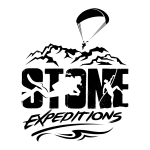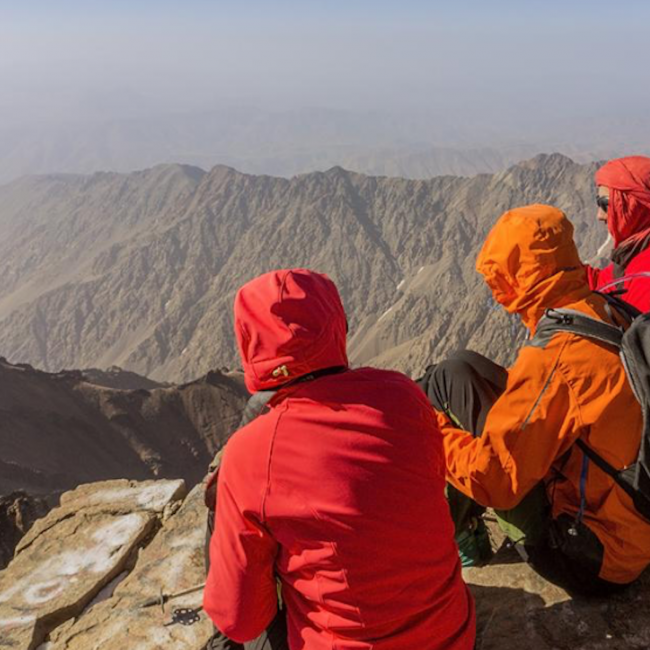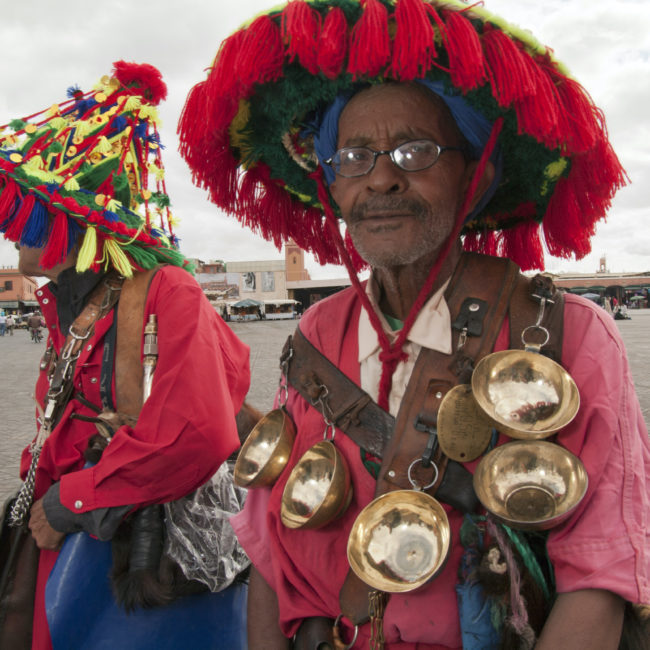
The country in Northern Africa is bordered by the Atlantic Ocean in the west, by the Mediterranean Sea in the north, by Algeria in the east and in the south by Western Sahara, the non-self-governing territory claimed by Morocco.
Morocco shares small borders with Spain by the Spanish exclaves of Ceuta and Melilla, and it has borders with Mauritania in the Moroccan-controlled part of Western Sahara as well as maritime borders with Portugal.
Morocco covers an area of 446,550 km² (excluding Western Sahara) making it slightly smaller than Sweden or slightly larger than California.
The country has a population of 34.8 million (in 2017); capital city is Rabat, largest city is Casablanca.
We help you fulfill your bucket list!
If you don’t see what you’re looking for, we would love to help create custom solutions and reach out to you!
Country Information
The Department of State has issued a Travel Advisory Level 3 for Morocco advising U.S. citizens to reconsider travel to Morocco due to COVID-19.
The Government of Morocco has extended the country’s “Health State of Emergency” until June 10, 2021.
If you are exhibiting signs or symptoms of COVID-19, please contact the Moroccan Ministry of Health’s hotline at +212 (0)8-01-00-47-47. Assistance is available in English, French or Arabic.
A nationwide curfew between the hours of 8:00 PM and 6:00 AM is in place until at least the end of Ramadan (the curfew is likely to be extended, though the hours may change). During this time, restaurants, stores, supermarkets, and other businesses must close by 7:00 PM. You must have written permission from the Moroccan authorities for movements during curfew hours.
Commercial transportation to/from Morocco and the United States is currently available. Authorities could put into place new flight restrictions with little notice. It may be difficult to enter or leave Morocco and travelers should expect delays entering Morocco and/or returning to the United States.
Travelers entering Morocco by air must present negative test results from a PCR test carried out less than 72 hours before boarding. Children under the age of 11 are exempt from this requirement.
You must have a valid passport with at least one blank page. Visas are not required for visits lasting less than 90 days. Visit the Embassy of the Kingdom of Morocco website for the most current visa information.
Carry a copy of your U.S. passport with you at all times to have proof of identity and U.S. citizenship readily available, if needed.
Children who possess U.S. passports and who are born to a Moroccan father may experience difficulty leaving Morocco without the father’s permission, even if the parents are divorced and the mother has legal custody. Under Moroccan law, these children are considered Moroccan citizens.
Make sure you are up-to-date on all routine vaccines before every trip. Some of these vaccines include chickenpox (Varicella), Diphtheria-Tetanus-Pertussis (DPT), flu (influenza), Measles-Mumps-Rubella (MMR), polio, and Hepatitis A and B
Everyone 16 years of age and older should get fully vaccinated for COVID-19 before travel.
Most of Morocco north of the Western Sahara, particularly along the coasts, experiences a typical Mediterranean climate, with mild wet winters and hot dry summers. The rainy season generally extends from October to April. Torrential downpours occasionally produce devastating floods, but overall several factors act to reduce the country’s rainfall. Morocco is on the southern margins of the mid-latitude tract of frontal storm systems that regularly traverse the North Atlantic. As a result, rainfall levels are relatively low and gradually decrease from north to south. High-pressure ridges, moreover, periodically develop offshore during the rainy season, shifting storms to the north. Drought results when these ridges persist for extended periods. The cold Canary Current off the western shores also induces atmospheric stability and further decreases the potential for precipitation.
Morocco is one of the most mature telecommunications markets in Africa. The kingdom is developing its telecom systems and investing extensively in hardware and networking infrastructure. In its 2018 report about the mobile economy in the MENA region, the Global System for Mobile Communications Association (GSMA) has indicated that Morocco will not get the fifth generation of mobile technology until 2022.
Mobile and Internet will be available in most areas, though some areas while in safari may not have any communication modes handy.
Morocco operates on a 220V supply voltage cycling at 50Hz. There are two associated plug types, types C and E. Plug type C is the plug which has two round pins and plug type E is the plug which has two round pins and a hole for the socket’s male earthing pin.
The Centers for Disease Control and Prevention (CDC) has issued a Level 3 Travel Health Notice for Morocco due to COVID-19, indicating a high level of COVID-19 in the country. Visit the Embassy’s COVID-19 page for more information on COVID-19 in Morocco.
If you decide to travel to Morocco:
- See the U.S. Embassy’s web page regarding COVID-19.
- Visit the CDC’s webpage on Travel and COVID-19.
- Stay alert in locations frequented by Westerners.
- Avoid demonstrations and crowds.
- Enroll in the Smart Traveler Enrollment Program (STEP) to receive Alerts and make it easier to locate you in an emergency.
- U.S. citizens who travel abroad should always have a contingency plan for emergency situations. Review the Traveler’s Checklist.
The dirham is the legal tender in Morocco, made up of 100 units each of them called a santim. Dirhams are the official Moroccan currency since 1882, and they come in coins of nine denominations and banknotes of four denominations.
You are advised to carry cash, an ATM or traveler’s check card, and a credit card that can be used for cash advances in case of emergency. The best places to exchange money are normally bureau de change, which are fast, have longer hours and often give slightly better rates than banks. The local currency is Indian Rupee (INR), but it is advised to carry hard notes of USD. Many hotels, lodges, and camps will be able to accept credit cards. However, it is advised to withdraw cash when visiting remote areas and villages.
The Moroccan population is mainly made up of Arabs, a mixture of Arab-Berber and Sunni Muslims of Berber descent. There is also a group of people referred to as the Gnaoua and Haratin, which are a highly mixed or black race of people. There is a Jewish minority group in Morocco and a number of foreign residents of Spanish and French origin. The Berbers, indigenous people of North Africa, have made Morocco home for the last five thousand years. The Arab population found in Morocco today originated from the Arab people who conquered this territory in the 7th and 11th century. There are an estimated 34,343,219 people living in Morocco.
The official language of Morocco is classical Arabic. A large number of Moroccans speak Berber while other local inhabitants use a distinct dialect called Morocco-Arabic. The unofficial language of Morocco is French, which is used primarily for economics, commerce, government and for educational purposes. In the northern parts of the country about twenty thousand Moroccans speak Spanish. English is becoming Morocco’s second foreign language and is taught in schools from the fourth year onwards.
Almost all Moroccans follow Islam and a large majority are Sunni Muslims, belonging to the Maliki school of Islamic jurisprudence. Other minority religions include Christianity, Judaism and Bahaism.
At the local level, Morocco is subdivided into multiple levels of government, all directly under the Ministry of the Interior. At the top are 16 regions, which are further divided into several dozen provinces and urban prefectures, each ruled by a governor appointed by the king. Beneath this second-order subdivision are rural qaḍawāt (districts) and municipalities, governed by chefs de cercle. The fourth level comprises rural communes and autonomous urban centres, governed respectively by qāʾids (caids) and pashas. Lower-order officials are appointed either by the Ministry of the Interior or by the governors. Each level has popularly elected bodies whose primary function is to help determine local matters and priorities, such as initiating development projects and deciding budget expenditures. At the end of the 1990s, government policy was moving toward allowing greater decision making at the local level.
The economy of Morocco is considered a relatively liberal economy governed by the law of supply and demand. Since 1993, Morocco has followed a policy of privatization of certain economic sectors which used to be in the hands of the government.[20] Morocco has become a major player in African economic affairs,[21] and is the 5th largest African economy by GDP (PPP). The World Economic Forum placed Morocco as the 1st most competitive economy in North Africa, in its African Competitiveness Report 2014-2015.
The services sector accounts for just over half of GDP; industry – made up of mining, construction and manufacturing – is an additional quarter. The sectors that recorded the highest growth are the tourism, telecoms, and textile sectors. Morocco, however, still depends to an inordinate degree on agriculture, which accounts for around 14% of GDP but employs 40–45% of the Moroccan population. With a semi-arid climate, it is difficult to assure good rainfall and Morocco’s GDP varies depending on the weather. Fiscal prudence has allowed for consolidation, with both the budget deficit and debt falling as a percentage of GDP.
The economic system of the country is characterized by a large opening towards the outside world. In the Arab world, Morocco has the second-largest non-oil GDP, behind Egypt, as of 2017.



